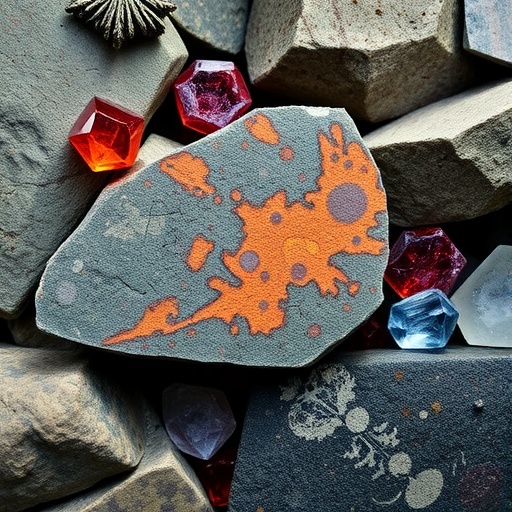Deep beneath the expansive outback of central Australia lie enigmatic rare rocks that have recently unveiled crucial clues about the genesis of one of the planet’s most significant new deposits of niobium. This strategic metal plays a pivotal role in advancing high-strength steel production and enabling a broad spectrum of clean energy technologies. Through meticulous research led by a team from Curtin University, these unique carbonatite formations have been dated to more than 800 million years ago, offering unprecedented insight into the geodynamic processes that shaped them during the breakup of the ancient supercontinent Rodinia.
Niobium, a relatively scarce transition metal, is indispensable for manufacturing lighter, stronger steel alloys critical to aerospace engineering, pipeline infrastructure, and the burgeoning electric vehicle (EV) industry. Furthermore, niobium’s role extends to cutting-edge battery technologies and emerging superconducting applications, positioning it as a linchpin element in the transition toward sustainable, low-carbon economies. Understanding how niobium-rich geological systems form and concentrate is fundamental to unlocking new resource frontiers, and this study brings clarity to these complex processes.
At the heart of this breakthrough are the carbonatites—a rare, carbonate-rich igneous rock type—that pierce through the Australian crust as intrusive bodies. These carbonatites originated from mantle-derived magmas enriched in incompatible elements like niobium, and their emplacement is closely intertwined with tectonic rifting events that fragmented Rodinia during the Neoproterozoic era. Using a suite of complementary isotope-dating techniques applied to drill core samples, the research team pinpointed the formation of these carbonatites between 830 and 820 million years ago.
The temporal coincidence of the carbonatite emplacement with extensive continental rifting highlights a substantial geotectonic control on magmatic fluid dynamics. Fault zones activated and preserved over hundreds of millions of years acted as high-permeability conduits for metal-rich magmas, facilitating their ascent from deep mantle sources through the lithosphere into the crustal levels. This deep-to-surface transport mechanism is critical for the formation of economically viable ore deposits and sheds light on the longevity and reactivation potential of tectonic structures in mineral system evolution.
Dr. Maximilian Dröllner, the study’s lead author, emphasized how these carbonatites stand apart from previously known regional occurrences. Their distinctive niobium concentrations and unique geochemical fingerprints suggest a hitherto unrecognized metallogenic episode associated with Rodinia’s rifting. By integrating multi-method geochronology with isotope geochemistry, the research transcends prior limitations in deciphering the timing and origin of such intricate rock systems, enabling a refined resolution of their magmatic and post-emplacement histories.
Professor Chris Kirkland, a co-author and fellow geochronologist, highlighted the research’s methodological innovation. Employing high-resolution imaging alongside isotope ratio analyses, the team could reconstruct an intricate sequence of geological events spanning over half a billion years documented within the carbonatite rocks. Such detailed reconstructions delineate the primary magmatic phases from subsequent alteration episodes, crucial for interpreting the genesis, preservation, and enrichment patterns of rare metal deposits within complex crustal terranes.
Carbonatites globally are renowned for being significant repositories of critical metals, including niobium and rare earth elements (REEs), both of which are increasingly vital to green technologies and strategic economic sectors. However, their study has historically been hampered by the complexity of their petrogenesis, multiple overprinting processes, and the low abundance of datable minerals. The success of this study in overcoming these challenges sets a new benchmark for combining isotope geochemistry with advanced imaging to unravel the geological evolution of rare metal systems.
The tectonic framework during the formation of these Australian carbonatites was marked by extensional stresses that generated rift basins and fracture systems within Rodinia’s continental crust. These dynamic settings not only produced the physical pathways needed for ascending mantle melts but also created environments conducive to fluid-rock interaction and metal mobilization. Understanding these relationships informs exploration strategies for other ancient rift-associated mineral deposits worldwide.
Moreover, the findings underscore the importance of long-lived fault zones as persistent geological structures that exert profound controls on magma migration and mineralization. These zones in the Aileron Province exemplify how sustained tectonic activity can reinitiate multiple magmatic pulses over hundreds of millions of years, thereby enhancing the concentration of strategic metals critical to modern technologies.
This multi-disciplinary study, titled Multi-method geochronology and isotope geochemistry of carbonatites in the Aileron Province, central Australia, represents a landmark contribution to economic geology and geoscience. Published in Geological Magazine, the research promulgates an advanced framework for assessing deep Earth processes and mineral system architectures that have shaped key metal deposits critical for future technological advancement.
In conclusion, the discovery and detailed characterization of these 800-million-year-old niobium-rich carbonatites unlock a vital chapter in Earth’s tectonomagmatic history. They illustrate how mantle dynamics, fault zone architecture, and continental breakup orchestrated the formation of a deposit with far-reaching implications for resource security and clean energy innovation. As global demand intensifies for metals essential to decarbonization, such studies provide critical knowledge to guide exploration and responsible resource development strategies on a planetary scale.
Subject of Research: Not applicable
Article Title: Multi-method geochronology and isotope geochemistry of carbonatites in the Aileron Province, central Australia
News Publication Date: 2-Sep-2025
Web References: http://dx.doi.org/10.1017/S0016756825100204
References: doi.org/10.1017/S0016756825100204
Keywords: Earth sciences, Economic geology, Geologic history, Geological events




